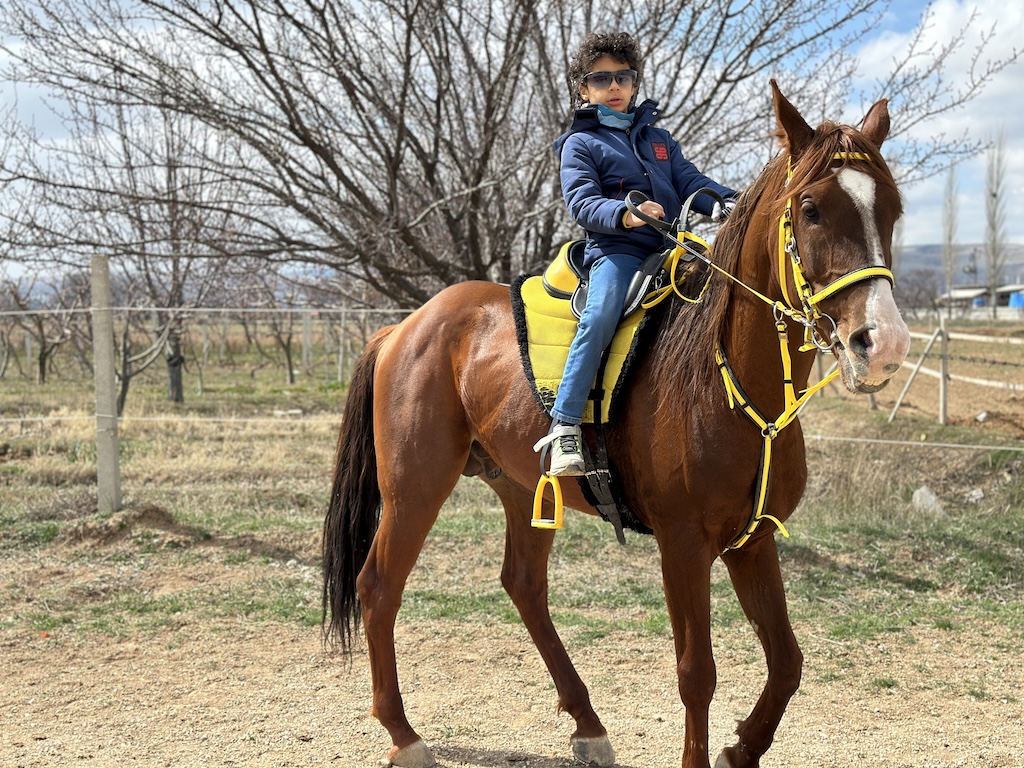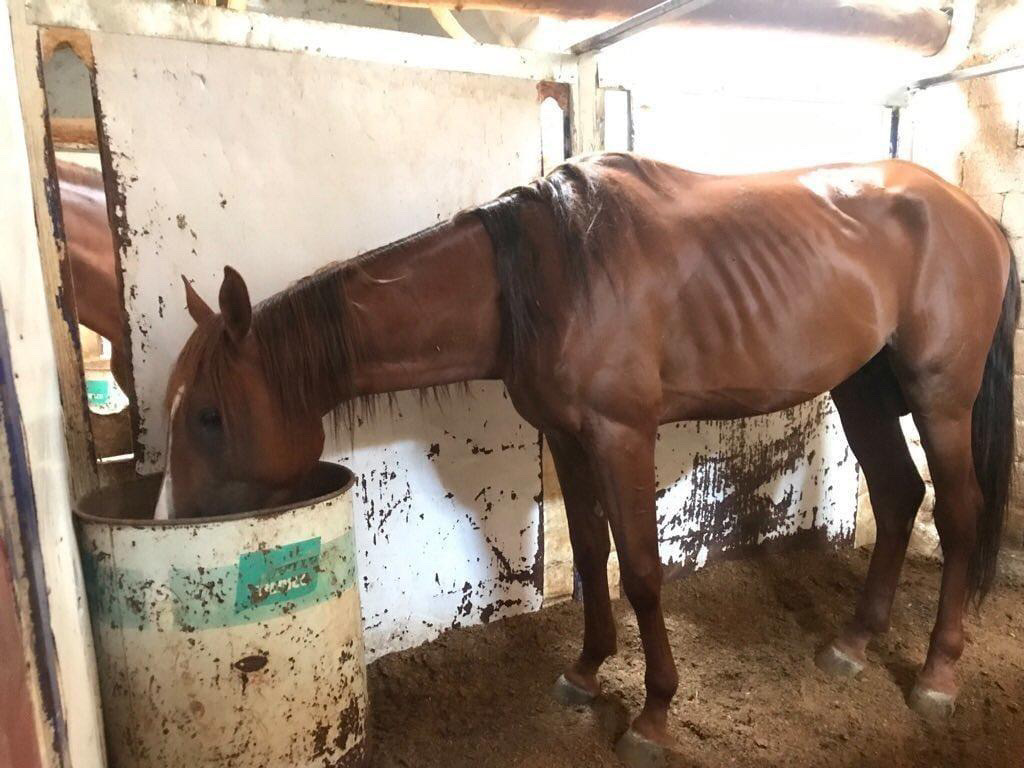
Horse Owners, How to Spot a Legitimate Stable (Before You Lose Your Horse & Your Money)
Oct 20, 2025
Years ago, I left my horse in a stable for a few months. Not because I didn’t care, but because life happened. Work demanded everything. I was gone. And so, I trusted the farm.
Before I left, I took photos. Videos. Checked his hooves. His back. His muscles. I made sure he was healthy, fed, and ready. I sent special supplements. I paid for his care. I believed I was doing right by him.
When I returned, I expected to see my horse, the same one who knew my voice, who nudged me with his nose when I came near. He recognized me. He nuzzled me. But I didn’t recognize him.
He was thin. Emaciated. His muscles had vanished. His back was hollow. His hindquarters were weak. The tendons on his legs? Swollen. Inflamed. He looked like a different animal.
And worse, no one told me. No update. No check-in. No explanation. Just silence.
I stood there, heart pounding, staring at the creature that used to be my partner. This wasn’t neglect. This was betrayal.
That moment changed everything.
I vowed then and there: I would never leave my horse again without being present. Without knowing exactly what was happening. Without seeing it with my own eyes.
Because I realized something deep: your horse is not a rental. It’s not a project. It’s not a commodity.
It’s your responsibility. Your bond. Your promise.
And if you can’t keep it, then maybe you’re not ready.

So here we are. This article isn’t just about horses. It’s about trust. About ownership. About what happens when you hand over the reins, and someone else takes the whole ride.
This is the story of how I learned the hard way that leaving your horse in someone else’s hands isn’t safe. That “care” isn’t always care. That a photo from six months ago doesn’t protect you from the truth today.
Now, I don’t just look at a horse. I look at the rider. The trainer. The farm. I ask questions. I demand transparency. I check the body. The feet. The mind. The spirit.
Because a horse isn’t just a beast of burden. He’s a living, feeling being, and he deserves better than silence, neglect, or profit-driven exploitation.
This is why I write. Not to scare. Not to shame. But to warn.
If you love your horse, if you truly care, then you must know where he is. Who’s looking after him. What he’s eating. How he’s moving. Whether he’s even getting out of the stall.
Because the day you stop checking… that’s the day he stops being yours.
And you’ll never get him back.
When You’re Away: How to Spot a Stable That Truly Cares for Your Horse (Not Just Uses It)
You’ve bought a horse. You’ve invested time, money, and heart into this partnership. You imagined quiet mornings with your equine friend, the rhythm of hooves on dirt, the peace of shared movement under open skies. You thought, finally, I can ride, bond, heal. But then life happened. Work, family, travel, you couldn’t make it to the stable for days. Maybe weeks.
When you returned, you expected your horse to be safe, cared for, exercised, fed, groomed. Instead, you found something else: confusion, stress, neglect. Your horse was used without your permission. Your saddle? Used by someone else. Your grooming tools? In someone else’s hands. And worse, no one told you. No check-in. No update. Just silence.
I’ve seen this happen over and over. Not just here. Not just in one place. After talking to riders from different countries, from Europe to North America, from Asia to South America, I realized this isn’t an isolated issue. It’s a pattern. A cycle. And it’s built on exploitation, deception, and a complete disregard for the horse.
Let me tell you what I’ve witnessed, and why we need to break this chain.
The Unauthorized Use of Horses and Equipment
This is the most common violation I’ve seen. A horse owner is busy. They leave their horse at a farm, trusting the caretakers. Then, without consent, the farm starts using the horse daily, for lessons, for visitors, for profit. The rider doesn’t come for two weeks? Perfect. That’s two more rides they can charge for. The saddle? Already borrowed. The bridle? Now in use.
Your horse isn’t a rental. Your equipment isn’t a communal supply. You paid for them. You own them. Yet some farms treat them like free resources. This isn’t care, it’s theft. And it’s not just about ownership. It’s about welfare. Horses are social, athletic animals. They need movement, interaction, structure. When they’re used non-stop by strangers, without rest or proper training, they burn out. Their bodies break down. Their minds spiral into anxiety.
One farm owner even asked me to move there for “education.” He said, “We’ll take care of your horse while you learn.” I smiled. I said, “Good luck.” Because I pay for my horse. For my gear. For my son to ride it. For my guests to share in that moment. Not so others can profit off it.
The Saddle Scam: Weighting Down Beginners
New riders get sold heavy traditional saddles, 6 to 8 kilograms, as if it’s “authentic” or “best for learning.” No. It’s not. It’s a scam. These saddles don’t help beginners. They hurt horses. They throw off balance. They cause back pain, muscle atrophy, and long-term damage.
And who benefits? The seller. The trainer. The farm. They make money selling outdated, unnecessary gear. Meanwhile, the beginner struggles, falls, blames the horse, and walks away frustrated. The real problem? The rider has no idea how to ride properly. But instead of teaching, they push the saddle. Because it’s profitable.
I’ve watched riders flail, arms swinging like windmills, hands jerking the reins like they’re trying to stop a runaway truck. That’s not riding. That’s panic. And yet, these people call themselves instructors.
The “Not a Good Horse” Lie
You buy a horse. You’re excited. You start riding. Then things go wrong. The horse resists. Tosses its head. Swishes its tail. You ask questions. You seek help.
And suddenly, the trainer says: “It’s not a good horse.”
That phrase, “not a good horse”, is a red flag. It’s not about the horse. It’s about the trainer. It’s a cover-up. A way to avoid responsibility. If the horse is acting up, it’s because the rider lacks skill. Or because the training plan is broken. But instead of fixing it, they say, “Sell him.”
And guess what? There’s always someone ready to buy. Someone who knows the trainer. Someone who gets a commission. The horse? Sold again. To another novice. Another dreamer. Another victim of the cycle.
I’ve seen horses go through three owners in less than a year. Each time, the same story: “He’s difficult.” “He’s not right.” “Maybe he needs a new home.” But the truth? The horse was fine. The rider wasn’t ready. The trainer didn’t know what they were doing.
The Fake Gatekeeper Cycle: The 8-Lesson Miracle
Here’s the worst part, the illusion. Some farms promise transformation in just eight lessons. “You’ll be riding like a pro!” they say. They teach nothing. Just standing in the saddle during trot. Letting the horse gallop. The rider thinks they’ve mastered it. They feel powerful. Excited. They want to buy a horse.
So they do. They spend their savings. They bring the horse home. Then comes the crash. They fall. They struggle. They don’t know how to use the reins. How to balance. How to communicate. They blame the horse. They try to sell it. They look for answers. And they find the same trainers who sold them the first lie.
It’s a loop. A cycle. Riders become sellers. Horses become commodities. Farms thrive on commissions, from sales, from gear, from repeated “lessons.” And the horse? Forgotten. Abused. Overused. Unloved.
These aren’t riders. They’re gatekeepers. They don’t care about horsemanship. They care about profit. They don’t teach. They manipulate. They create dependency. They turn passion into debt.
The Broken Horse Sales: Lies Wrapped in Leather
Some of the worst cases involve outright fraud. I’ve heard of horses with multiple leg surgeries being sold as “perfect for trail rides.” Horses with chronic back pain being pushed into jumping sessions. Horses with lameness issues being used for lessons.
The seller knew. They lied. They marketed the horse as healthy. Safe. Ready. But when the buyer arrives, the truth hits. The horse limps. The rider falls. The trust shatters.
This isn’t just unethical. It’s dangerous. Horses deserve honesty. Riders deserve safety. And no one should be forced to risk injury because someone wanted to make a quick buck.
Horse Therapy: Why We Must Protect the Bond
I’ve written before about how horses heal. How they teach patience, discipline, empathy. How they carry us not just physically, but emotionally. But that healing only happens when the relationship is honest. When the horse is respected. When the rider learns.
When you see a horse suffering, from poor training, from neglect, from misuse, you’re not just losing an animal. You’re losing a teacher. A partner. A healer.
Horses are sentient. They feel. They remember. They suffer in silence. And when we ignore their needs, we betray the very purpose of riding.
How to Choose the Right Farm (and Spot the Bad Ones)
If you’re buying a horse, or renting one, or leaving it at a stable, here’s how to protect yourself, and your horse:
Check the Stable’s Routine
Do they walk horses daily? Are they exercised consistently? Is there a clear schedule? A farm that treats horses like assets will have a strict, humane routine. One that ignores them won’t.
Ask About Medical Care
Does the stable have a vet on call? Are medications stored properly? Is there a system for injuries? A serious farm will have a medical area, records, and emergency plans.
Inspect the Equipment
Is the tack well-maintained? Are saddles clean? Are bridles free of frays? If gear looks old, worn, or poorly stored, that’s a warning sign.
Watch the Riders
Real riders move with balance. Transitions are smooth. Hands are light. The horse responds, not rebels. If you see exaggerated movements, jerking reins, or a rider bouncing like a rag doll, walk away.
Demand Transparency
Before leaving your horse, sign a clear agreement. Who can ride it? When? For how long? Can they use your gear? Get it in writing. No excuses.
Talk to Other Owners
Ask around. What’s the reputation of this farm? Have other owners had problems? If everyone’s silent, that’s a red flag.
Trust Your Gut
If something feels off, if the trainer talks too fast, promises miracles, or pushes sales, step back. True horsemanship isn’t flashy. It’s steady. It’s patient. It’s respectful.
Final Thoughts
Horse riding isn’t about ego. It’s not about status. It’s not about making money from someone else’s dream.
It’s about connection. Discipline. Responsibility. Healing.
But that only works when we protect the horse. When we honor the bond. When we stop pretending that abusing animals is “tradition,” and start treating them like the intelligent, sensitive beings they are.
The cycle ends now. With awareness. With education. With courage.
Because your horse isn’t a machine. It’s a partner. And it deserves better.